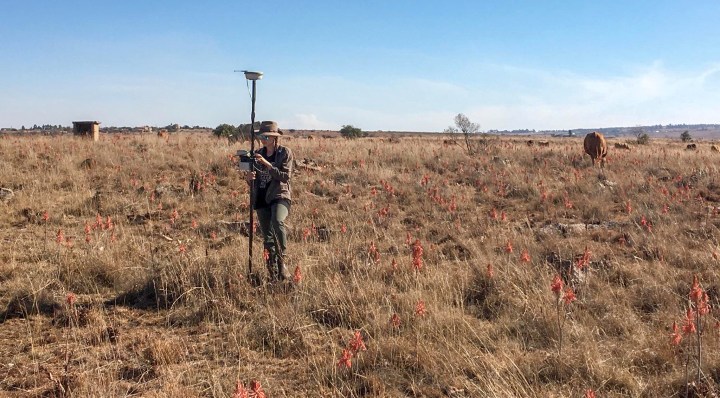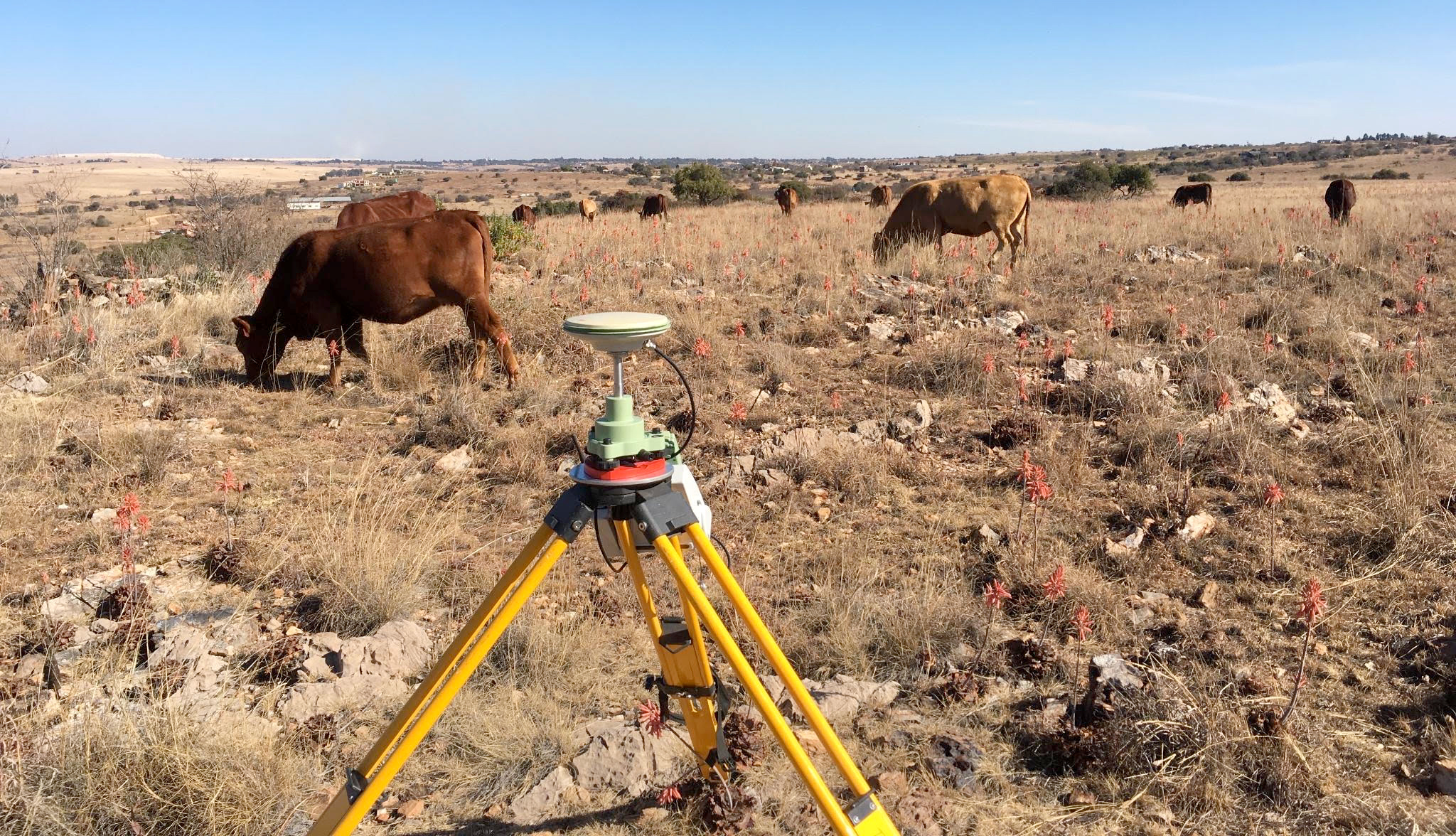PALEO DATING
New study challenges the age of oldest cave at Cradle of Humankind

A small cave in the Cradle of Humankind was dated years ago to 4.5 million years – far older than any paleo sites in the area. New multidisciplinary science has now shown it is much younger than previously thought.
The Cradle holds important clues about human evolution. Work done over the past few years by the Human Evolution Research Institute (HERI) at the University of Cape Town has shown no evidence for any sites in the Cradle older than 3.2 million years ago.
This may bring various questions about how the Cradle and its multitude of caves and thousands of fossils are viewed. It is home to nearly 40% of all known human ancestor fossils, including the famous Australopithecus africanus skull nicknamed Mrs Ples and Australopithecus sediba.
Dr Tara Edwards, a postdoctoral fellow at HERI, was the lead author of a scientific paper published recently in the Journal of Human Evolution which provides evidence that a cave called Waypoint 160 on Bolt’s Farm in the Cradle is not 4.5 million years old, and therefore not the oldest in the Cradle.
Using a multidisciplinary approach to sediment analysis, paleomagnetism and uranium-lead dating, the age of the cave deposits was determined at between 2.27 and 1.70 million years, correcting previous work which overestimated the age by about two million years.

Work at Bolt’s Farm station in the Cradle of Humankind near Sterkfontein, using a differential GPS set up among the rocky outcrops and cattle. (Photo: Tara Edwards)
Bolt’s Farm is the name given to a complex of active caves and more than 20 fossil-bearing palaeocave remnants located near Sterkfontein in the Cradle. It has been a site of some interest since it was first surveyed in the 1930s. However, no geochronological (dating) work was done until Edwards and Dr Robyn Pickering, co-director of HERI, began working there.
Edwards explains why the caves on Bolt’s Farm are so important: “The fact that it preserves so many palaocaves is very unique. Most sites in the region are either complex multigenerational caves like Sterkfontein, or a single hole in the ground pit such as Malapa, Coopers or Kromdraai.
The dating was made from a rat species, Euryotomys bolti, which was intermediate in its evolution – and a middle point was chosen.
“There has been a pervasive belief that Bolt’s Farm preserves deposits of great antiquity. And therefore, if Bolt’s Farm does, there could be other sites of great antiquity preserved elsewhere in the Cradle.
“However, this work shows that Waypoint 160 actually fits very well into what is known about the chronology of the Cradle. There is currently no multidisciplinary evidence of sites older than 3.2 million years.”
The old age was determined using biochronology, which just means looking at other fossils. Ideally, biochronology is done using fossils from well dated sites but this was not the case, Edwards explains. The dating was made from a rat species, Euryotomys bolti, which was intermediate in its evolution – and a middle point was chosen.
“The fossil was originally recovered from a rubble dump, which is the remnant of lime mining, adjacent to the site. Because we only located one fossil-rich unit. This unit is located stratigraphically higher than the dated basal flowstone, therefore we can confidently say that the E. bolti specimen is younger than 2.2 million years,” said Edwards.
“This is true of other fossils recovered from the site, including an in-situ primate tooth which was published as the earliest primate in the region. We can now confidently say that this is not the case, and the primate remains fit within the regional model.”
How the dating was done
The cave environment has two major components: flowstone – calcium carbonate like stalagmites and stalactites – which form big sheets on the cave floor; and sediment which is mostly dirt from the outside environment.
Uranium-lead (U-Pb) dating was used only on the flowstones. “Two flowstones were dated using U-Pb dating and these constrain the maximum and minimum age. The basal flowstone taken from the floor of the cave provides the maximum age and the capping flowstone provides the minimum age. U-Pb dating measures the proportions of isotopes of the parent (uranium) and daughter (lead). Once a flowstone is deposited, the uranium present in it will begin to decay and by measuring how much of each is present we can determine the age,” Edwards explained.
“Palaeomagnetism studies the changes in the direction and intensity of Earth’s magnetic field through time. We know that the magnetic field wanders and even completely reverses, and that these changes are recorded in magnetic minerals.
Read more in Daily Maverick: ‘Greatest age of exploration’ — fossil finder Lee Berger recalls personal journey as world awaits ground-breaking new find
“By sampling rocks which contain magnetic minerals, and measuring them under set conditions, we can match the changes in Earth’s magnetic field as they are recorded with a global record known as the geomagnetic polarity timescale. While the U-Pb dates anchor the palaeomagnetic record by providing robust radiometric ages, the latter provide continuity throughout the sequence,” she said.
There is mounting evidence that the Silberberg Grotto [in Sterkfontein] and Little Foot are not nearly as old as claimed.
Currently, the Hoogland site, in the north of the Cradle, is best dated to 3.2 million years. Next up is Sterkfontein, dated by us to 2.8 million years at the base of the sequence of sediments and fossils.
Pickering said: “Historically the various caves in the Cradle have been seen as induvial stories, but our previous work in Nature showed very clearly that this region is a landscape which evolved in a similar way for the last few million years and the caves, and the fossils and sediments in them, are all of a similar age to each other.

Bolt’s Farm is a complex of more than 20 fossil-bearing palaeocave remnants located near Sterkfontein in the Cradle of Humankind. New research as shown that there is no evidence for any sites in the Cradle older than 3.20 million years ago. (Photo: Andy Herries)
“Sterkfontein is no different and within our regional framework fits in between 2.8 and 1.8 million years old.
“There is mounting evidence that the Silberberg Grotto [in Sterkfontein] and Little Foot are not nearly as old as claimed. This new study is important because we bust the myth that deposits as old as 4 million years old must exist in the Cradle.”
Read more in Daily Maverick: Meet Little Foot: World’s oldest forerunner of modern humans unveiled and on display
Little Foot, an Australopithecus which was found in 1997 in the Silberg Grotto, was dated to 3.6 million years old.
She said this study is yet another piece of evidence that these caves do not preserve fossils older than three million years, at the most. “This is important as we need to know exactly how old the hominins, and other animal fossils are, in order to fit them into what we understand about human evolution and figure out where they fit in our human family tree,” added Pickering. DM/OBP
For tickets to Daily Maverick’s The Gathering Earth Edition, click here.


















 Become an Insider
Become an Insider
Comments - Please login in order to comment.